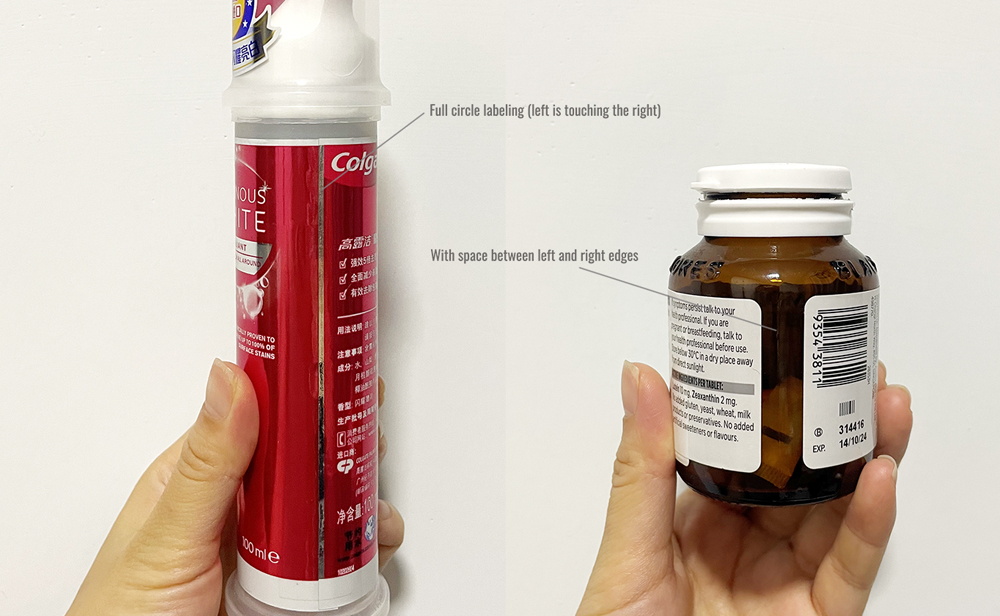Unveiling Full Wrap and Partial Wrap Approaches
In the realm of product packaging, labels act as the narrative thread that introduces your offerings to the world. Similar to selecting the perfect attire for an event, choosing the appropriate labeling method requires a deep understanding of your product’s distinct features and the impact you intend to achieve. Within this exploration, we’ll delve into two distinct labeling methods – full wrap and partial wrap – and uncover their unique strengths and their respective applications.

The Full Wrap Approach: Enveloping Elegance Around Your Product
When to Choose Full Wrap: Imagine a product with textures or shapes that challenge conventional labeling methods. The full wrap technique emerges as the solution, embracing your product entirely.
Advantages:
- Seamless Integration: Full wrap creates a polished, seamless appearance that covers every contour and texture of your product.
- Maximum Branding: You can leverage the entire surface to showcase your brand logo, design, and product details.
- Storytelling Canvas: Utilize the ample space to tell your product’s narrative, engaging customers with its journey.
Considerations: However, keep in mind that full wrap may present challenges such as color or positioning discrepancies between the label’s beginning and end due to the intricacies of application.
The Partial Wrap Approach: Provoking Curiosity
When to Choose Partial Wrap: Imagine a product with a surface that accommodates a label, but you’re drawn to the idea of revealing a portion of what lies beneath. The partial wrap method shines when showcasing a fraction of the product adds an element of intrigue.
Advantages:
- Intrigue and Allure: Partial wrap encourages customers to explore, piquing their curiosity about your product.
- Design Flexibility: Strategically position the label to interact with your packaging’s contours, creating a distinctive design.
- Functional Harmony: Align the label to prevent interference with crucial product information or features.
Selecting the Right Method: A Thoughtful Decision
Product Characteristics and Packaging: Opt for full wrap when your product’s textures or shapes challenge traditional labeling methods. Conversely, opt for partial wrap when your product’s surface comfortably accommodates a label.
Brand Identity and Appeal: Consider whether your brand’s image resonates more with the intrigue of partial wrap or the encompassing elegance of full wrap.
Consumer Engagement: Reflect on your target audience’s preferences. Does partial wrap’s element of surprise resonate, or do they value the comprehensive story that full wrap provides?
Regulations and Compliance: Ensure your chosen method aligns with regulations, including essential product information and safety warnings.
Supplier Expertise: Collaborate with labeling experts who can share insights based on their experience and guide you in selecting the most suitable method.
In Conclusion: Elevating Your Product’s Presence
In summary, the interplay between full wrap and partial wrap labeling methods offers distinct advantages based on your product’s attributes and your branding objectives. Whether embracing the uniqueness of a full wrap or evoking curiosity through a partial wrap, the chosen method should harmonize seamlessly with your product’s identity and resonate with your audience’s preferences. Just as the right attire bolsters confidence, the perfect labeling method enhances your product’s appeal, ensuring it’s primed to create a lasting impact in the global marketplace.


